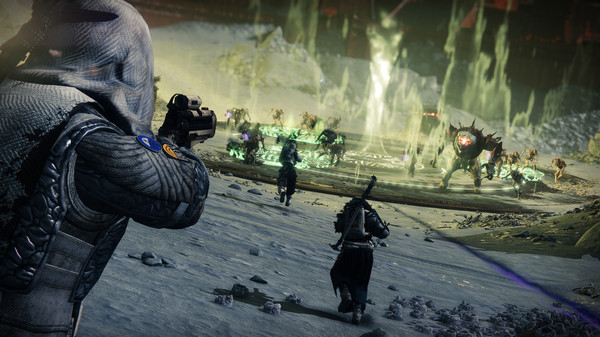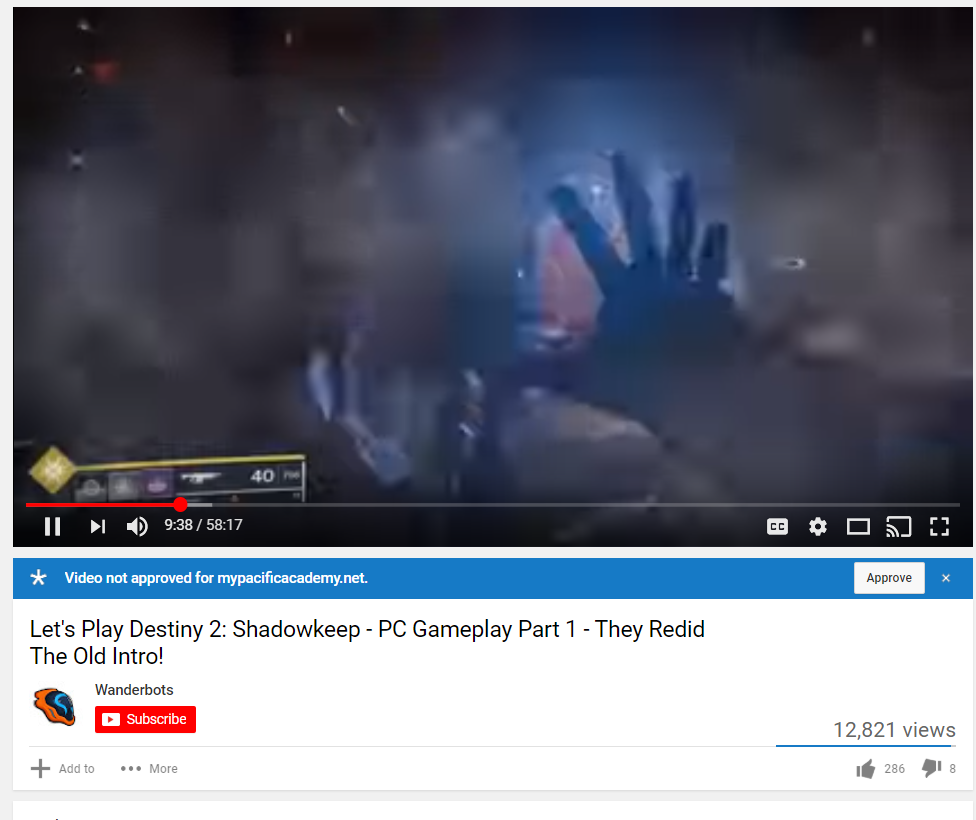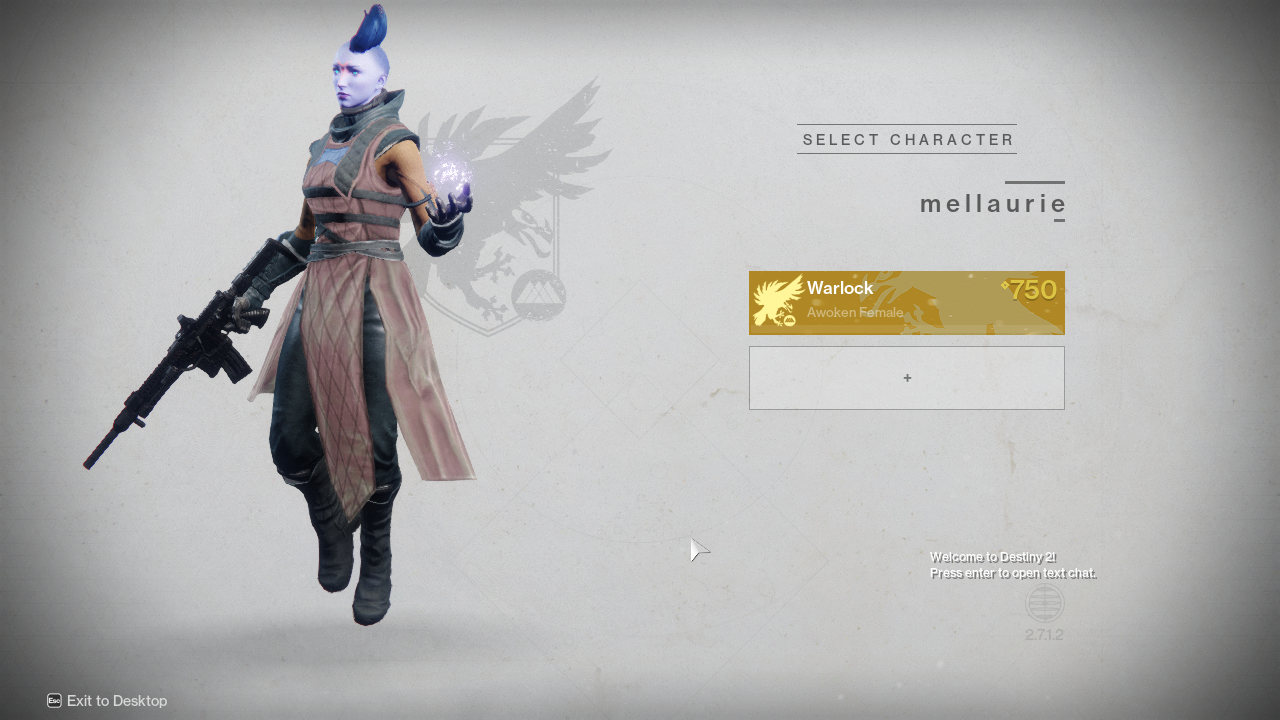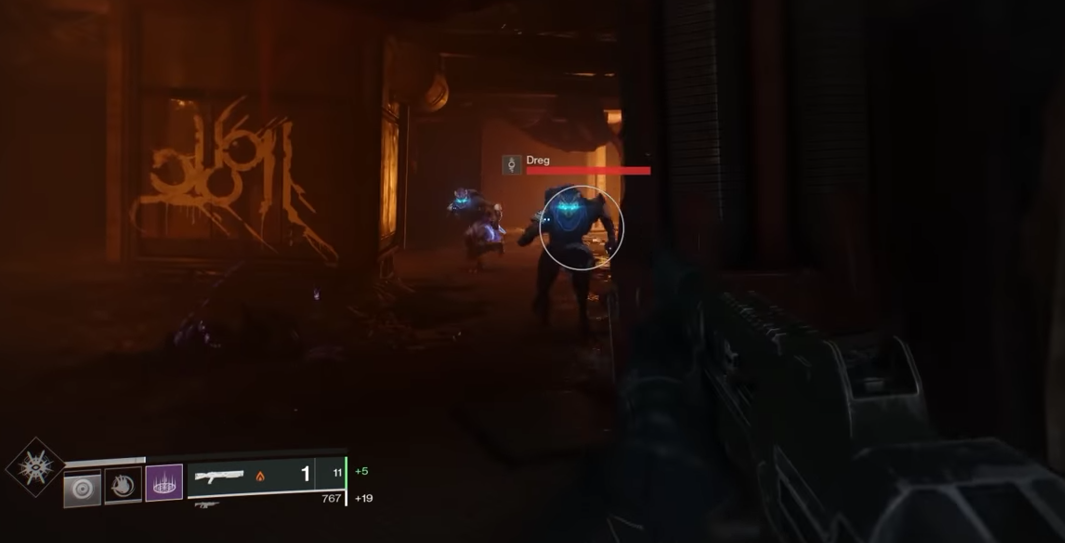Destined for Embodiment

I chose Destiny 2 because I wanted to try something popular and out of my comfort zone. In my other MET courses, I have encountered scholarly work on MMOs and RPGs, but I do not play these types of games. The idea of player embodiment fascinated me, and I was curious what it would feel like.
I found the first and most cumbersome barrier to embodiment was the interface. It was hard to move quickly and accurately in the game, which seemed to be a necessary skill for success, as demonstrated by Wanderbots’ gameplay. For me, it was due to being unfamiliar with certain buttons for commands. For example, even though it was also Wanderbots’ first time in Destiny 2, his wealth of gaming experience easily allowed him to figure out how to use the special abilities of the Warlock (see Fig. 1). My struggle with the gaming interface is noteworthy because it is also a barrier to accessibility. I could not effectively use the special abilities. Farrow and Iacovides (2014) describe how the gaming industry knows it needs to develop more natural ways for players to interact with the game to increase or sustain engagement. The easier it is for a player to internalize the gameplay and project themselves into the game environment, the more embodied in the game they become.

Games can also engage the player through its design. Fullerton (2014) lists different elements that affect engagement, one of them being character. The ability to customize your avatar is not only satisfying the need for personalization and representation, but creates a connection between player and game even before the gameplay has started. In Destiny 2, I spent at least 10 minutes creating my avatar and thoroughly enjoyed it (see Fig. 2). Options included selecting your race: human, awoken (alien-ish) or exo (robot-like), and your class: Titan, Hunter or Warlock, in which each class has a unique set of abilities. It seems that there is no clear advantage in selecting one race or class over another, only existing to give the player choice. Though the option for gender was binary, facial features, colors, hair styles and markings were fluid and allowed for more freedom of expression. I noticed that Wanderbots also took his time to create his avatars, and like me, tried to balance creating someone totally different than who we are and yet also familiar.

I think one of the most interesting elements that my field notes revealed is that Destiny 2 clearly created and reinforced a me-versus-them mentality. Although this may be obvious because it is a First Person Shooter (FPS) game, I was surprised at how effective this perspective and gameplay drew me into violence. The need to survive and kill anything attacking me was so intense that adrenaline started racing through my body. No doubt that I was embodied in the game. There was no time to care about the Dreg’s backstory and why they were attacking, there was only time to figure out how to shoot them (see Fig. 3). There was no other way to interact with them. As Fullerton suggests “bound by the rules of play, we perform actions that we would never otherwise consider—shooting, killing, and betrayal are some” (2014, p.57). What is most poignant of my experience was that it was a stark contrast to Wanderbots’. Watching him play the exact same scenes with calm, confidence and candor made me wonder whether he was just as embodied as I was or if he had been desensitized to violence in videogames.
Overall, I found that Destiny 2 successfully used detailed graphics, choice in representation, and FPS perspective and gameplay to facilitate the player’s sense of being in the game.

Fieldnotes:
References
Farrow, R., & Iacovides, I. (2014). Gaming and the limits of digital embodiment. Philosophy & Technology, 27(2), 221-233.
Fullerton, T. (2014). Game Design Workshop: A Playcentric Approach to Creating Innovative Games, NY: Taylor & Francis (CRS Press)
Wanderbots. (2019, Oct 2). Let’s Play Destiny 2: Shadowkeep – PC Gameplay Part 1 – They Redid The Old Intro! (video). Retrieved from https://www.youtube.com/watch?v=jSMXHP8ZvRs
